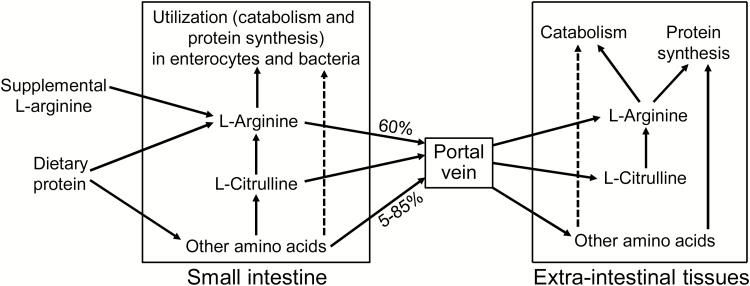Figure 2.
Metabolism of arginine in animals. In the gastrointestinal tract, the hydrolysis of dietary protein by extracellular proteases and peptidases releases Arg, other amino acids, and small peptides into the lumen. Enterocytes take up these products of digestion, degrade Arg, and release citrulline. Catabolism of amino acids also occurs by bacteria in the lumen of the gut. In postweaning pigs and rats, approximately 40% of Arg and 15% (e.g., tryptophan) to 95% (e.g., glutamate) of other AA in the lumen of the small intestine are utilized through catabolism and protein synthesis, during the first pass into the portal vein. Thus, 5% (e.g., glutamate) to 85% (e.g., tryptophan) of AA in the lumen of the small intestine enters the portal vein. In extra-intestinal tissues, the Arg that is not used for protein synthesis enters catabolic pathways initiated by arginase, Arg:glycine amidinotransferase, Arg decarboxylase, and nitric-oxide synthase. This figure is reused from Wu et al. (2016), with permission from Springer Nature.

